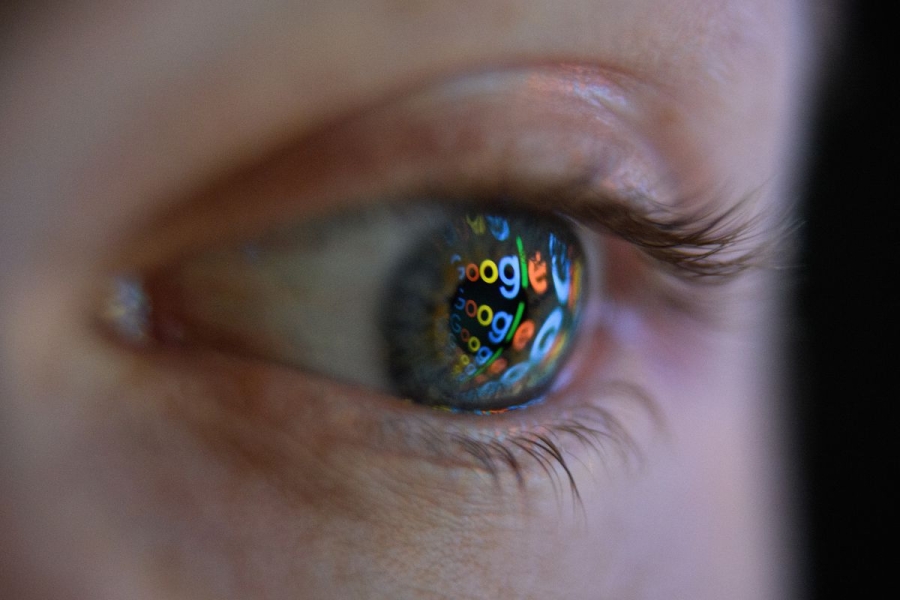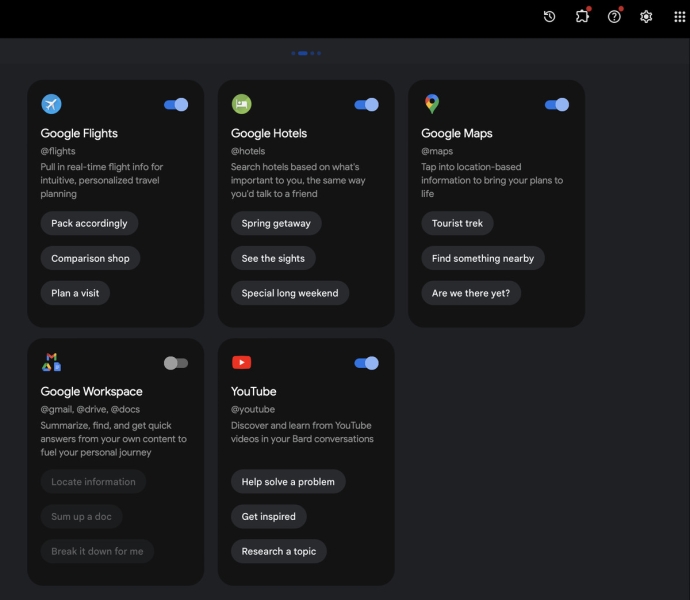Microsoft was first to AI search, but Google’s Bard can now pull stuff in from Gmail, Docs, Maps, and more.

Sara Morrison is a senior Vox reporter who has covered data privacy, antitrust, and Big Tech’s power over us all for the site since 2019.
The buzz around consumer generative AI has died down since its early 2023 peak, but Google and Microsoft’s battle for AI supremacy may be heating up again.
Both companies are releasing updates to their AI products this week. Google’s additions to Bard, its generative AI tool, are live now (but just for English speakers for the time being). They include the ability to integrate Bard into Google apps and use it across any or all of them. Microsoft is set to announce AI innovations on Thursday, though it hasn’t said much more than that.
The updates may give us a better idea of how we’re most likely to use generative AI in our daily lives. Instead of assisting us with searching the internet and generating blocks of text based on the results, they’ll be embedded in apps we use all the time, combing through our lives to assist us with our various tasks. That is, they’ll be less of a party trick and more of a party planner.
“What we’ve learned over the first six months led us to this moment,” Jack Krawczyk, product lead for Bard, told Vox. “A pretty profound and pivotal moment in the very, very short history of consumer language models.”
One of the biggest new Bard features is Bard Extensions, which lets users add Bard to Google tools and apps, including Gmail, Drive, YouTube, Maps, Flights, and Hotels.
“We’re allowing people, as they’re collaborating with Bard, to bring in content from their Gmail, from Docs, from Google Drive,” Krawczyk said.
Google’s examples of how this might work include planning a trip across Gmail, Flights, Hotel, and YouTube (travel planning seems to be everyone’s favorite use case, though results may vary), as well as pulling information from a résumé stored on Google Drive and summarizing it to help write a cover letter in Docs or Gmail. Google’s enterprise product, Workspace, had some generative AI integrations already with its Duet AI, but not across all of these apps and not available to the general public, as Bard’s now are.
To access Bard’s new features, go to Bard’s dedicated site. If you don’t get a prompt notifying you about the extensions, click on the puzzle piece icon in the top right corner. Click “continue” and then “connect” and you’ll be taken to a set of toggles that lets you turn the extensions on or off. If you’re not comfortable giving Bard access to your emails, for instance, you can turn “Google Workspace” off.

What’s coming from Microsoft is less clear, but the company has already integrated generative AI into various Microsoft products. Those tools are for its enterprise customers, though, and they come at a cost: Generative AI-enhanced LinkedIn is available for premium subscribers; users have to pay to add Copilot to Microsoft 365 (which is itself a paid service), and there’s even an “enterprise” version of Bing Chat. If the goal is widespread adoption by consumers, free is going to reel in a lot more of them than something that costs money. This also assumes that Microsoft, which is very much an enterprise software company, is even going for the general consumer beyond its Bing ambitions.
Taken in tandem and depending on what Microsoft has to say on Thursday, these can also be seen as the second wave of major AI announcements from those companies since the big unveiling of internet search integration early this year that kicked off the AI Search Race. Google, and especially Microsoft, hailed AI search as the future of internet search, but it doesn’t seem to have set the world on fire. Microsoft’s Bing saw only a tiny traffic bump. Google’s Bard isn’t as integrated into Google search as Bing’s chatbot is into Bing, and it’s still labeled “experimental.” It feels more like something Google is offering to people who already know it’s there and just want to give it a try, while Bing is pushing Bing Chat as a feature of its search that it wants as many people as possible to use.
It’s understandable why Microsoft pushed the new Bing so hard: It had a partnership with the hottest company in the field, OpenAI, and, with Google dominating so much of the search market, Microsoft had very little to lose if Bing Chat flopped and a lot to gain if it caught on. But Google’s more reserved approach might’ve been the right one in the end. Generative AI continues to struggle with hallucinations that make it an unreliable source of information. It’s also not clear how many people really want their internet search engines to come up with text responses that attempt to summarize the whole of the internet rather than links pointing to the outside authorities from which chatbots scrape their data.
Another new Bard feature seems to take the last several months of chatbot foibles into account: The “Google it” button under Bard responses can now be used to help double-check its accuracy. Statements it can verify are highlighted in green if Bard finds links that back them up and orange if it finds links that say something different.
“People are much more willing to interact and collaborate when they know someone is willing to admit ‘I’m not confident about this’ or ‘I made a mistake,’” Krawczyk said.
It is, if nothing else, a nod to the significant accuracy issues that chatbots have demonstrated, which makes them difficult to trust as the collective knowledge summarizers they were touted as, especially when it came to searching the internet. Perhaps when the source data is users’ own emails and docs, and the requests are for writing based on summaries of those things, users will be more willing to integrate them into their daily lives and tasks. Then again, we’ve seen AI personal assistants before — including from Google — and they never really caught on the way their developers hoped they would. Generative AI assistants might go the same way. Or they might fulfill the promise that old-school AI assistants never did.
“A language model is going to be able to integrate in with your personal life,” Krawczyk said. “We’re used to technology doing things for us … Bard is doing things with us.”
Now we’ll see who wants that integration and what they use it for.
Update, September 19, 12:30 pm: This story now includes instructions for how to turn Bard extensions on.
Source: vox.com






